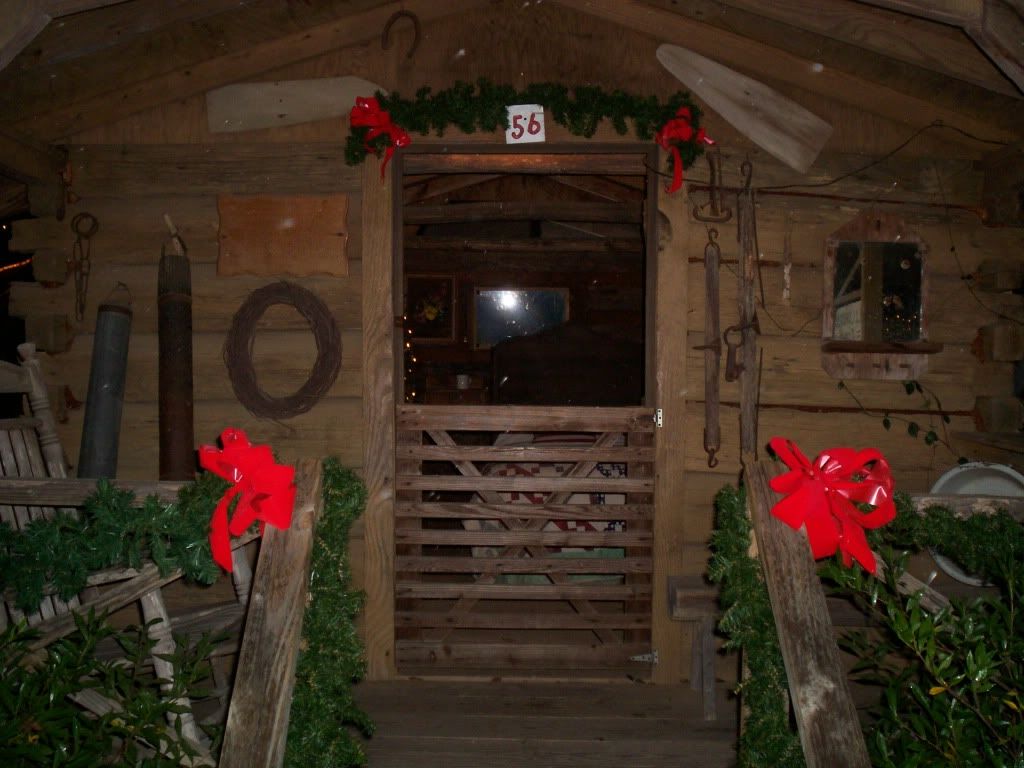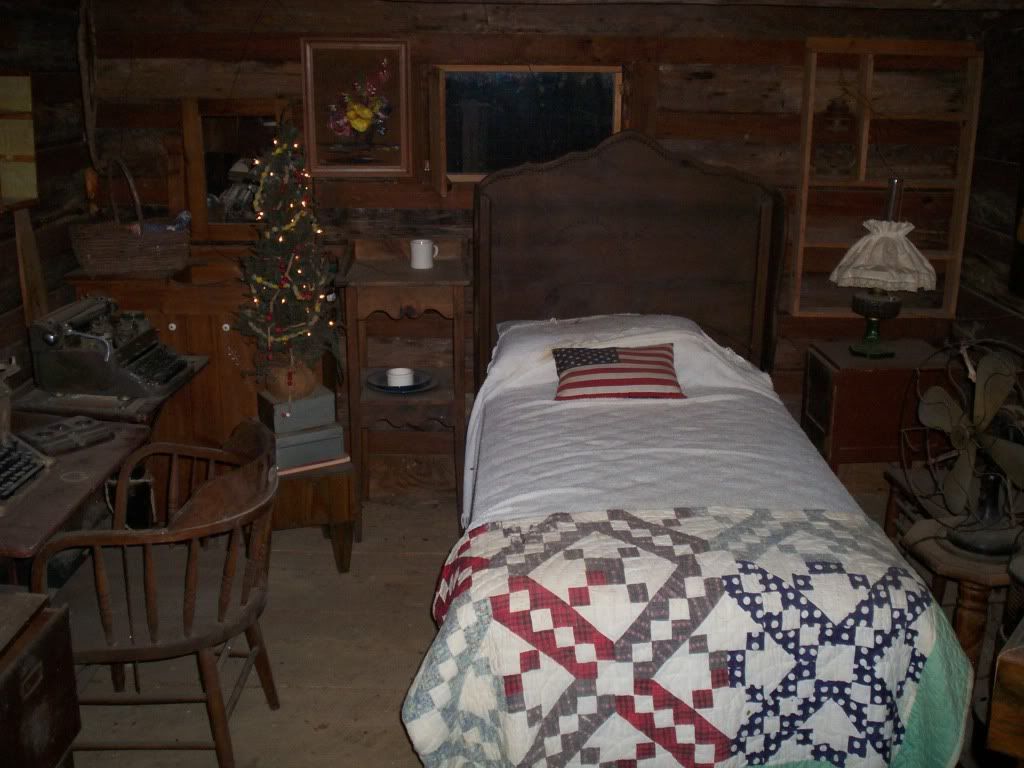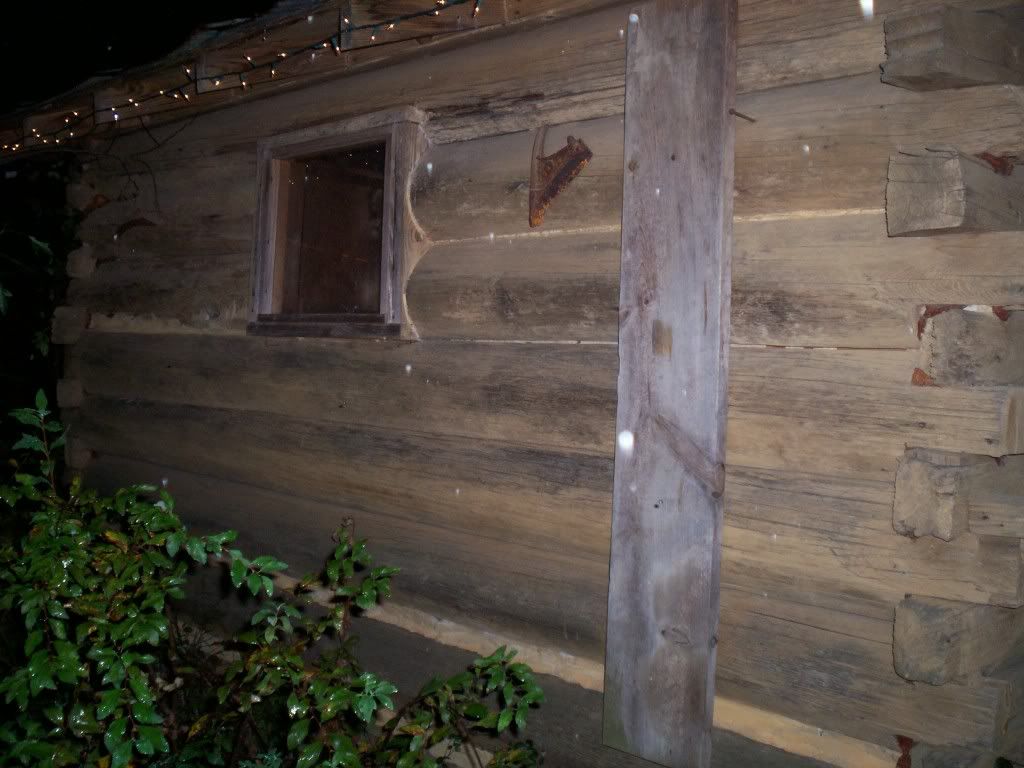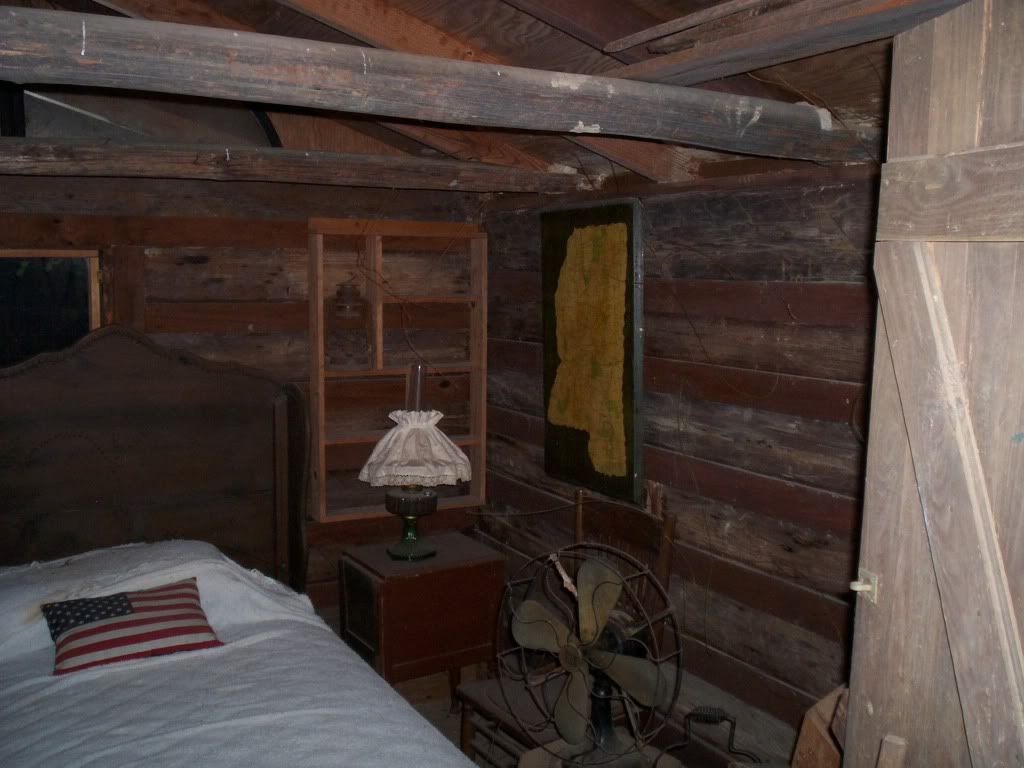It's been three weeks since I stopped to post here, but I haven't forgotten you folks (yes, all two of you)! Work has been crazy, holidays have come and gone, and I'm exhausted. But I've found a day or two to work on materials for my future cabin. A couple weeks ago I visited a friend who's cutting some pine trees to make room for a new house that he and his wife are building. He offered them to me for nothing, so we spent a couple days cutting, limbing, and loading them on a trailer to haul. Got several fantastic 16-25 foot logs out of the deal, and several more are laying on the ground waiting to be picked up...as soon as this nasty, muddy winter rain lets up.
Another stroke of luck came of that visit. The guy's parents heard what I want to do (build log structures) and thought it would be fun to build a small (10X10) cabin for their grandson. They have several huge old longleaf pine on the property, and once cut and split lengthwise they'll make fine cabin logs. Whatever's left of them after I build it is mine to keep, along with enough other timber to equal my labor cost. I like that deal.
Been working for another friend clearing out her yard. There are 20 or so old, fairly straight popcorn trees laying down; think I'll build a doghouse for our pooch or a rough little shed from those. Her neighbor, a very nice older lady, offered me free run of her six acres to cut whatever I pleased for firewood or logs in return for a little brush clearing. I like that deal, too! She's got some nice, straight trees on the back side of her place, so I might have to get at it.
To accomplish all this good stuff, I had to have a new chainsaw. The old Poulan Pro was great while it lasted, and it still works, but it vibrates a lot and just isn't as powerful as I wanted. After selling a couple of things, I made enough money to buy a brand new Stihl Farmboss with a 50cc engine and 18'' bar. It's a monster on a fresh, green log. I've gotten spoiled. Runs clean, doesn't vibrate, and knifes through anything I touch. Nice!
I'm calling a gentleman today about a few lighter'd blocks for the foundation of my little cabin at home. If what he has is the proper size and price, that's what I intend to use. If not, then concrete block piers it is. Simple, cheap, and while not the best to look at...it gets the job done. So far, it looks like it will be white oak for my two sill logs (the longest logs running down the left and right sides of the cabin), oak floor joists, pine and poplar for the wall logs, rafters, and tie beams, and whatever else is handy for the porch. If I get enough pine from my friend's place, though, everything save the sills and joists will be pine. It's a matter of supply, you know?
At any rate, I'll be posting pictures of my growing log pile and the foundation, once I've got things started. Till then--God bless!
Friday, December 30, 2011
Saturday, December 10, 2011
The week of Thanksgiving, a local homestead and village had its fall open house.
It's called Landrum's Country, and it's located in the piney woods
of Jones County. A picket fence, reconstructed log cabins, a quaint
chapel, and an endless line of stores, food vendors, and fun activities
provide a wealth of entertainment for visitors of all ages. Had I thought
about it, I'd have taken more pictures to give you an idea of what it
looks like. There's so much to see, from a grist mill to an old cypress
pirogue, wagons, plows, antique tools, tractors, local artifacts, and
plenty more.
A band of Confederate reenactors (some of my best buds and campmates)
puts on a mock battle with a band of Yankees each year. I abstained this year,
choosing to sit by the fire and eat their fine "possum" soup. It's really
turkey, but you get such a fun reaction when you tell folks it's possum.
We've debated catching a possum and keeping him in a cage near the fire,
in case we run out of turkey next year.
Anyway, on to the point! The old cabins and log homes on the place caught
my eye, and I went on an exploratory journey. There's an old dogtrot
they've framed in, adding a hallway and a nice parlor, a log corn crib,
and several round-log cabins from the area. One of those cabins was built
during the War. If you live in the South, you don't need to specify
"which" war. It's just The War, and we all know you're referring to the
northern invasion. Around 1863, a local soldier came home on leave and
built himself a split-log cabin of clear pine logs about 8-10 inches in
diameter.
I'd never seen such a snug cabin built of halved logs, and it gave me
some inspiration. The notches are simple square notches, and whoever
restored the cabin spiked them with nails for added support. It's roughly
11X11 on the exterior, and 10X10 on the inside. A low ceiling and solid
tie-beams, coupled with the inviting porch and gleaming lamp, offered an
inviting glimpse of the past.
Here's a look at the inside:
The square notches:
One side:
The other side:
A sealed wall where the old hearth used to be:
Here's a shot of the narrrow strips placed along the butted log sides. I
imagine they were placed there to have a backstop for the chinking.
Next time we go, I'll get pictures of all the other buildings. There are
some fine examples of deep south cabin-craft, as I call it. The little
cabin we've been looking at here gave me several ideas, not least of
which was using split logs. For such a small cabin (10X10), and in our
very mild climate (it rarely dips below 30 in the winter, and never lasts
more than a few days even at that temperature), 4-5 inches of log wall
would provide plenty of insulation. The narrowest part of these logs are
about 4 inches. It looks like the builder split the logs, then hewed or
adzed the tops and bottoms to a flat surface. After notching, they sat
directly on each other and provided a tight seal. A small bead of
chinking would have been plenty to provide protection from the elements.
Due to extra hours at work and the obligations of the Christmas season, I
haven't done much toward building my little cabin, but I'm planning to mark
off the foundation and figure out whether we're using cinder blocks, bricks,
treated posts, or lighter'd chunks, if I can find them. If you don't know what
lighter'd is, stay tuned and I'll post some nice pictures of these beautiful old
pine knots.
It's called Landrum's Country, and it's located in the piney woods
of Jones County. A picket fence, reconstructed log cabins, a quaint
chapel, and an endless line of stores, food vendors, and fun activities
provide a wealth of entertainment for visitors of all ages. Had I thought
about it, I'd have taken more pictures to give you an idea of what it
looks like. There's so much to see, from a grist mill to an old cypress
pirogue, wagons, plows, antique tools, tractors, local artifacts, and
plenty more.
A band of Confederate reenactors (some of my best buds and campmates)
puts on a mock battle with a band of Yankees each year. I abstained this year,
choosing to sit by the fire and eat their fine "possum" soup. It's really
turkey, but you get such a fun reaction when you tell folks it's possum.
We've debated catching a possum and keeping him in a cage near the fire,
in case we run out of turkey next year.
Anyway, on to the point! The old cabins and log homes on the place caught
my eye, and I went on an exploratory journey. There's an old dogtrot
they've framed in, adding a hallway and a nice parlor, a log corn crib,
and several round-log cabins from the area. One of those cabins was built
during the War. If you live in the South, you don't need to specify
"which" war. It's just The War, and we all know you're referring to the
northern invasion. Around 1863, a local soldier came home on leave and
built himself a split-log cabin of clear pine logs about 8-10 inches in
diameter.
I'd never seen such a snug cabin built of halved logs, and it gave me
some inspiration. The notches are simple square notches, and whoever
restored the cabin spiked them with nails for added support. It's roughly
11X11 on the exterior, and 10X10 on the inside. A low ceiling and solid
tie-beams, coupled with the inviting porch and gleaming lamp, offered an
inviting glimpse of the past.
The plywood used in the reconstruction of the roof, along with the modern
nails and modern materials used to replace cracked chinking, made my
inner log purist snarl...but hey--it's much better than no roof and big
gaps between the logs, right? Some of the logs on the back side are in
pretty rough shape with large, gaping cracks and chunks missing; I hope
they're planning on sealing them somehow. I'd hate to see such an amazing
old building crumble away. I'm glad people like the Landrums care enough
about our local history to rescue such old barns, cabins, and outbuildings. If
I had the money, I'd be doing the exact same thing. More power to you, Mr. Tom!
Here's a look at the inside:
The square notches:
The other side:
A sealed wall where the old hearth used to be:
Here's a shot of the narrrow strips placed along the butted log sides. I
imagine they were placed there to have a backstop for the chinking.
Next time we go, I'll get pictures of all the other buildings. There are
some fine examples of deep south cabin-craft, as I call it. The little
cabin we've been looking at here gave me several ideas, not least of
which was using split logs. For such a small cabin (10X10), and in our
very mild climate (it rarely dips below 30 in the winter, and never lasts
more than a few days even at that temperature), 4-5 inches of log wall
would provide plenty of insulation. The narrowest part of these logs are
about 4 inches. It looks like the builder split the logs, then hewed or
adzed the tops and bottoms to a flat surface. After notching, they sat
directly on each other and provided a tight seal. A small bead of
chinking would have been plenty to provide protection from the elements.
Due to extra hours at work and the obligations of the Christmas season, I
haven't done much toward building my little cabin, but I'm planning to mark
off the foundation and figure out whether we're using cinder blocks, bricks,
treated posts, or lighter'd chunks, if I can find them. If you don't know what
lighter'd is, stay tuned and I'll post some nice pictures of these beautiful old
pine knots.
Subscribe to:
Posts (Atom)






